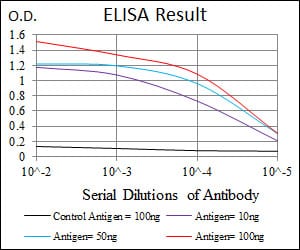
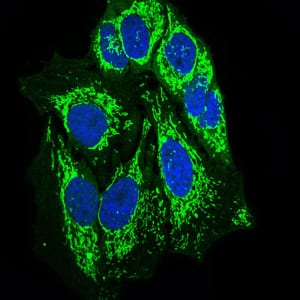
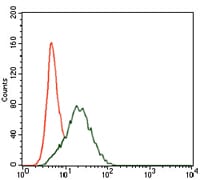
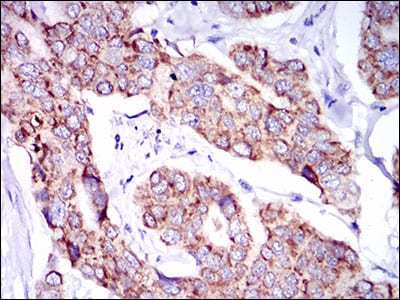
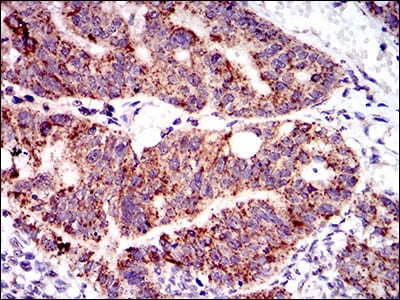
| WB | 咨询技术 | Human,Mouse,Rat |
| IF | 咨询技术 | Human,Mouse,Rat |
| IHC | 1/200 - 1/1000 | Human,Mouse,Rat |
| ICC | 1/200 - 1/1000 | Human,Mouse,Rat |
| FCM | 1/200 - 1/400 | Human,Mouse,Rat |
| Elisa | 1/10000 | Human,Mouse,Rat |
| Aliases | CFC; NS1; SHP2; BPTP3; PTP2C; PTP-1D; SH-PTP2; SH-PTP3; MGC14433 |
| Entrez GeneID | 5781 |
| clone | 6D9 |
| WB Predicted band size | 68.4kDa |
| Host/Isotype | Mouse IgG1 |
| Antibody Type | Primary antibody |
| Storage | Store at 4°C short term. Aliquot and store at -20°C long term. Avoid freeze/thaw cycles. |
| Species Reactivity | Human |
| Immunogen | Purified recombinant fragment of human PTPN11 (AA: 263-329) expressed in E. Coli. |
| Formulation | Purified antibody in PBS with 0.05% sodium azide |
+ +
1. **"Mutations in PTPN11. encoding the protein tyrosine phosphatase SHP-2. cause Noonan syndrome"**
- **作者**: Tartaglia M, et al.
- **摘要**: 该研究首次发现PTPN11基因突变导致SHP-2磷酸酶功能异常,与努南综合征(Noonan syndrome)的发生相关。文中通过Western blot和免疫沉淀实验,使用PTPN11抗体验证突变对SHP-2蛋白活性的影响。
2. **"SHP-2 tyrosine phosphatase in growth factor signaling"**
- **作者**: Chan G, Feng GS.
- **摘要**: 研究探讨SHP-2在生长因子(如EGFR、PDGFR)信号传导中的作用,利用PTPN11抗体检测其在细胞定位及磷酸化水平的变化,揭示其调节Ras/MAPK通路的分子机制。
3. **"Antibody-based profiling of protein tyrosine phosphatases in human cancers"**
- **作者**: Neel BG, Ostman A.
- **摘要**: 综述了多种PTP酶(包括SHP-2/PTPN11)在肿瘤中的异常表达,总结了PTPN11抗体的临床应用(如免疫组化、流式细胞术)及在癌症靶向治疗中的潜在价值。
4. **"Structural and functional characterization of the SHP-2 tyrosine phosphatase"**
- **作者**: Keilhack H, et al.
- **摘要**: 通过X射线晶体学结合抗体介导的蛋白互作分析,解析SHP-2的N-SH2和PTP结构域构象变化,阐明其自抑制机制及突变导致功能亢进的分子基础。
(注:以上文献信息为示例性概括,实际文献可能存在差异,建议通过PubMed或学术数据库核实具体内容。)
×